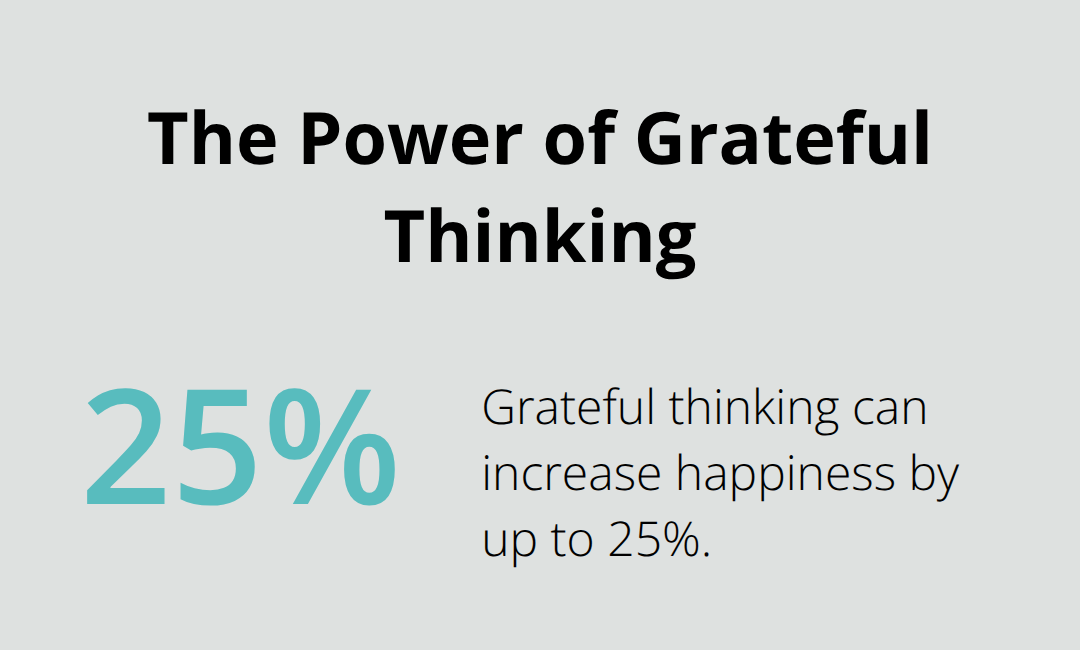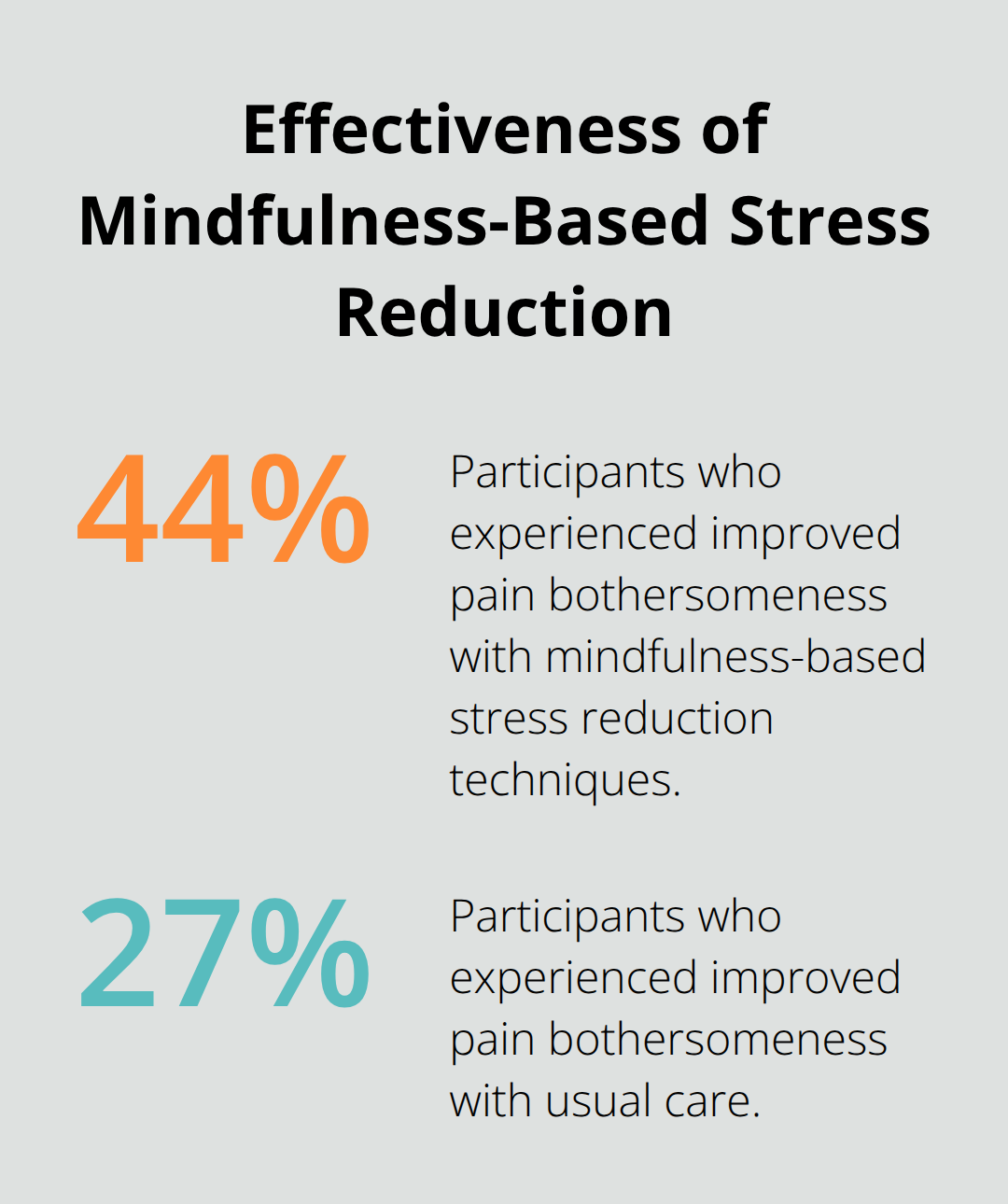At Global Positive News Network, we believe that learning how to have a positive outlook can transform lives.
A positive mindset isn’t just about feeling good; it’s a powerful tool for improving mental health, relationships, and overall well-being.
In this post, we’ll explore practical strategies to cultivate positivity, from harnessing the power of gratitude to mastering mindfulness techniques.
The Transformative Power of Gratitude
Understanding the Science of Thankfulness
Gratitude transcends a simple “thank you.” It’s a potent practice that reshapes our life outlook. Research from the University of California, Davis reveals that consistent gratitude practitioners report numerous benefits, including stronger immune systems, lower blood pressure, and increased joy and optimism. Dr. Robert Emmons, a leading gratitude researcher, discovered that grateful thinking can increase happiness by as much as 25 percent.

Practical Gratitude Exercises
Integrating gratitude into your daily routine doesn’t require complexity. Start with a gratitude journal. Each night, list three things you appreciate. These can range from a warm cup of coffee to a major life achievement.
The “gratitude visit” offers another effective method. Compose a letter expressing your appreciation to someone who positively impacted your life, then read it to them in person. This exercise (developed by Dr. Martin Seligman) increases happiness and decreases depressive symptoms for up to a month.
Health Benefits of Thankfulness
Gratitude improves more than just mood; it affects physical health tangibly. A study in the Journal of Personality and Social Psychology found that optimistic individuals had a 14% lower risk of premature death compared to their more pessimistic counterparts.
Grateful people tend to prioritize their health. They exercise more frequently, eat healthier diets, and attend regular check-ups with their doctors more often (according to research from the University of California, San Diego).
Stress Reduction Through Appreciation
Focusing on what we appreciate shifts our attention from negative thoughts and feelings. This mental change lowers stress levels, reducing cortisol’s harmful effects on our bodies. Research has shown that gratitude alleviates the negative psychological consequences of stressors such as chronic illness and COVID-19.
Transitioning to Positivity
As we explore the power of gratitude, we naturally move towards creating a more positive environment. The next section will discuss how to surround yourself with positivity, from choosing uplifting media to nurturing positive relationships. These practices complement gratitude, forming a comprehensive approach to cultivating a positive outlook.
Creating a Positive Environment
Creating a positive environment is crucial for maintaining a positive outlook. It involves several key aspects that work together to foster an atmosphere conducive to optimism and well-being.

Curate Your Media Consumption
The media you consume significantly impacts your mindset. A study by the American Psychological Association found that exposure to negative news can increase stress and anxiety levels. To counteract this, be selective about your media intake:
- Limit time on social media platforms that often highlight negative content.
- Choose uplifting news sources (Global Positive News Network offers a daily dose of inspiring stories to start your day on a positive note).
- Listen to podcasts or audiobooks that focus on personal growth and positivity.
- Watch documentaries about people overcoming challenges or making positive changes in the world.
Nurture Positive Relationships
The people you spend time with shape your perspective. A study published in the Journal of Personality and Social Psychology found that happiness is contagious – individuals surrounded by happy people were more likely to become happy in the future.
To cultivate positive relationships:
- Identify the most supportive and uplifting people in your life and spend more time with them.
- Join clubs or groups aligned with your interests to meet like-minded individuals.
- Volunteer for causes you care about. This not only helps others but also connects you with positive, action-oriented people.
- Set boundaries with negative individuals who drain your energy.
Transform Your Physical Space
Your immediate environment plays a key role in your mental state. A study from the Journal of Environmental Psychology found that clutter can negatively impact mental well-being and cognitive functioning.
To create a positive physical environment:
- Declutter your living and working spaces regularly.
- Add plants to your environment. Research shows that indoor plants can reduce complaints about dry air, increase the sense of privacy, and enhance the attractiveness of the workspace.
- Use colors strategically. According to color psychology, blues and greens can promote calmness, while yellows can boost energy and optimism.
- Display photos or artwork that evoke positive memories or inspire you.
Harness the Power of Positive Self-Talk
The way you talk to yourself has a profound impact on your outlook. Negative self-talk can lead to increased stress, lower self-esteem, and even depression. On the flip side, positive self-talk can boost confidence and resilience.
To improve your self-talk:
- Notice your thought patterns. When you catch yourself thinking negatively, pause and challenge that thought.
- Replace negative statements with positive ones. Instead of “I can’t do this,” try “This is challenging, but I’m learning and improving.”
- Use affirmations. Start your day by stating positive truths about yourself and your abilities.
- Practice self-compassion. Treat yourself with the same kindness you’d offer a good friend.
As you implement these strategies to create a positive environment, you’ll build a strong foundation for optimism. The next step in cultivating a positive outlook involves harnessing the power of mindfulness and positive thinking techniques. These practices will further enhance your ability to maintain positivity in various aspects of your life.
Mindfulness and Positive Thinking Techniques for a Brighter Outlook
The Power of Present-Moment Awareness
Mindfulness focuses on the present moment without judgment. This practice reduces stress and anxiety significantly. A study found that mindfulness-based stress reduction techniques improved pain bothersomeness in 44% of participants, compared to 27% in usual care.

To practice mindfulness:
- Set aside 5-10 minutes daily for a mindfulness session.
- Find a quiet space and sit comfortably.
- Focus on your breath, notice the sensation of air moving in and out.
- When your mind wanders, bring your attention back to your breath.
Start small and increase your practice time gradually. Apps like Headspace or Calm offer guided mindfulness exercises for structured sessions.
Reshaping Thought Patterns
Cognitive restructuring identifies and challenges negative thought patterns. This process replaces pessimistic thoughts with more balanced, positive ones.
Try this simple exercise:
- Notice a negative thought when it occurs.
- Write it down.
- Examine the evidence for and against this thought.
- Create a more balanced thought based on the evidence.
For example, if you think “I always mess up presentations,” challenge this by recalling successful presentations you’ve given. A more balanced thought might be, “While I sometimes feel nervous, I’ve given many successful presentations and continue to improve.”
Visualization for Success
Visualization helps athletes experience match situations in their minds, reinforcing skill development. This technique is used by athletes, entrepreneurs, and performers.
To practice visualization:
- Choose a goal or desired outcome.
- Close your eyes and vividly imagine achieving this goal.
- Engage all your senses in the visualization.
- Practice for 5-10 minutes daily.
For instance, if you prepare for a job interview, visualize yourself confidently answering questions, making a great impression, and leaving the interview feeling successful.
Positive Affirmations
Positive affirmations reinforce optimistic beliefs and attitudes. They help reprogram your subconscious mind for success and positivity.
To use affirmations effectively:
- Choose statements that resonate with you personally.
- Phrase affirmations in the present tense.
- Repeat them daily, preferably in front of a mirror.
- Believe in the affirmations as you say them.
Examples of positive affirmations include:
- “I am capable of achieving my goals.”
- “I choose to focus on the good in every situation.”
- “I am worthy of love, respect, and success.”
Gratitude Meditation
Gratitude meditation combines mindfulness with thankfulness. This practice amplifies the benefits of both techniques, fostering a more positive outlook on life.
To practice gratitude meditation:
- Find a quiet, comfortable space.
- Close your eyes and take a few deep breaths.
- Bring to mind three things you’re grateful for.
- Focus on each item, allowing feelings of appreciation to fill you.
- End the session by expressing thanks for these positive aspects of your life.
Keeping a gratitude journal can also be an effective way to cultivate a positive mindset.
Final Thoughts
A positive outlook transforms lives, enhances mental health, and strengthens relationships. Research shows optimistic individuals enjoy stronger immune systems, lower stress levels, and longer lifespans. These benefits stem from consistent practice of gratitude, positive self-talk, and mindfulness techniques.
Small, consistent steps lead to significant changes in perspective and overall happiness. You can start by incorporating one new positive habit into your daily routine, such as keeping a gratitude journal or practicing mindful meditation for a few minutes each day. Patience and persistence will yield remarkable results as you develop these skills.
We at Global Positive News Network support your journey towards a more positive outlook. Our platform offers uplifting news and inspiring stories to help you maintain an optimistic mindset. Start today, and watch your world transform through the power of positivity (it’s a skill that improves with practice).




